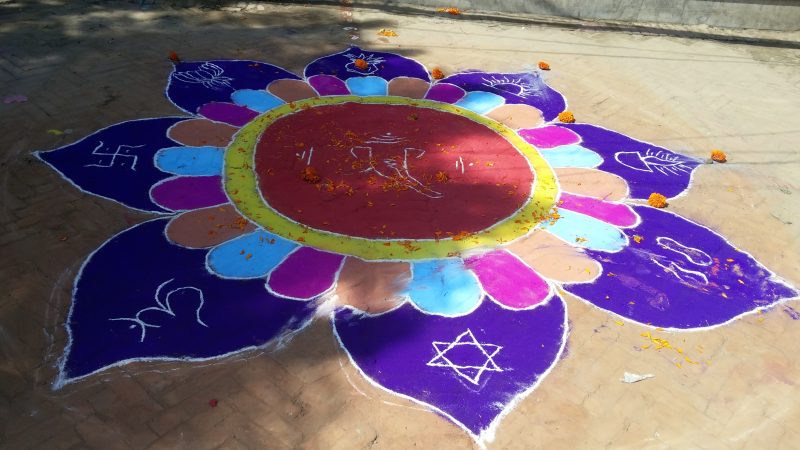Rangoli: Art of the Lakshmi Puja
Tihar Time in Nepal!
After a month-long series of Hindu holidays, we have reached the last major festival of the year: Tihar. Better known in the Western world by its Indian name ‘Diwali,’ the concept is the same in both countries.
Background
First, a bit of background about the various Pujas (worship) of Tihar before we get to the Rangolis:
This festival, the nation’s second most important after Dashain, lasts five days. Each day has a unique focus of worship.
Day 1: Crows, heralds of death or misfortune, are worshiped in an attempt to avoid death and sadness
Day 2: Dogs are worshiped partially because people like them, but also because the hold a special place in Hindu mythology.
Day 3: Cows and Lakshmi are worshiped even more than they usually are as symbols of abundance. It is on this day that Hindu’s undertake a major cleaning of their homes and shops (not unlike Spring cleaning in the West) and undertake a variety of ritual activities intended to invite the goddess of wealth, Lakshmi, into the home.
Day 4: This day’s activities vary by people group with some worshiping their own soul, some oxen,  and still others worship cow excrement (not joking).
and still others worship cow excrement (not joking).
Day 5: The final day culminates with all of the country’s women worshiping their brothers.
The Rangolis of Day 3

A rangoli is an elaborate bit of colorful street art designed to catch Lakshmi’s eye and welcome her into one’s home. These are made with dyed gypsum powder sold by street vendors all over Nepal. A small path is often drawn from the rangoli to the entrance of the home to further guide her path. In the evening of the third day, this path and the entrance will be lit with candles.
The photos in this post are of various rangolis that were spotted while running errands around Kathmandu.
Enjoy!
